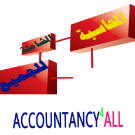-
محتوى مشابه
-
- 3 ردود
- 3,003 قراءات
-
نصائح مهمة لكل رجل اعمال مقبل على فتح مشروع جديد - اهتم بإمساك دفاترك المحاسبية الكترونياً
بواسطة Hameed,
- 3 ردود
- 4,585 قراءات
-
- 1 رد
- 2,311 قراءات
-
- 2 ردود
- 2,992 قراءات
-
- 0 ردود
- 2,145 قراءات
-






Recommended Posts
انشئ حساب جديد أو قم بتسجيل دخولك لتتمكن من إضافة تعليق جديد
يجب ان تكون عضوا لدينا لتتمكن من التعليق
انشئ حساب جديد
سجل حسابك الجديد لدينا في الموقع بمنتهي السهوله .
سجل حساب جديدتسجيل دخول
هل تمتلك حساب بالفعل؟ سجل دخولك من هنا.
سجل دخولك الان